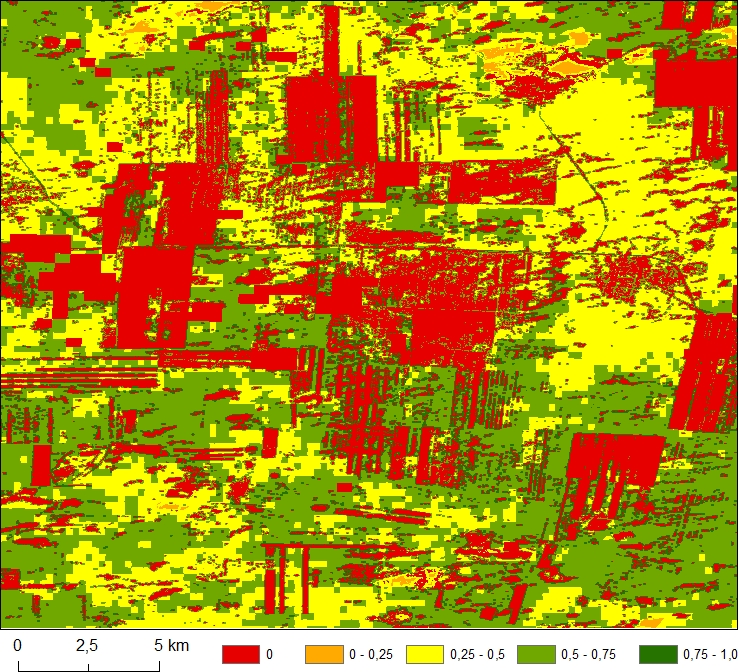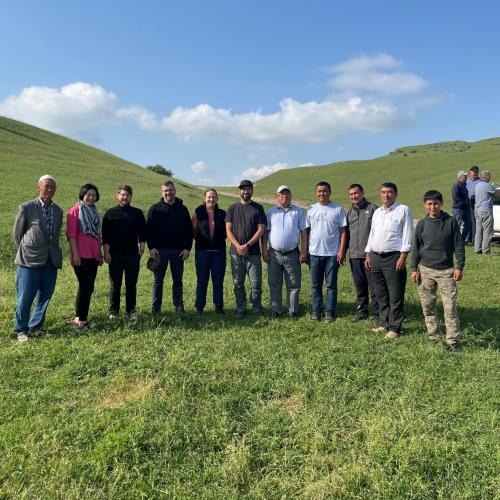SDG success story: Locust-Tec

Coordinator: Deutsches Zentrum für Luft- und Raumfahrt e.V.
Contact Person: Igor Klein
Address: Münchener Straße 20, 82234 Weßling
Phone: +49 815328-2656
Email: igor.klein(at)dlr.de
Project partners
Project partners in Kazakhstan
Locust plagues are a serious threat to agricultural production, food security and the environment. They can cause severe economic damage and starvation crises and destroy vegetation and the livelihood of farmers in large areas. Current strategies for monitoring and controlling locust pests are often costly, inadequate, or have very negative impacts on health and the environment. The German-Kazakh project Locust-Tec is developing innovative technologies for monitoring and forecasting locust outbreaks as well as environmentally friendly techniques for control. The project is driving preventive control and the introduction of alternative monitoring methods that can reduce the use of insecticides.
The systematic and accurate monitoring and control of locust populations is of critical importance in many parts of the world to prevent locust plagues. The neglect or inefficiency of these tasks often leads to enormous damage to agricultural areas such as in Kazakhstan and Madagascar, or in Sardinia in June of 2019.
On the one hand, the Locust-Tec project is trying to create an improvement in the field of prediction of locust plagues as well as innovative and effective monitoring in Kazakhstan. On the other hand, alternative and environmentally friendly control options are being developed. The project methodology is built on three interlinked pillars: Risk of locust outbreak, monitoring and locust control.
Locust-Tec uses satellite and climate data to derive geo-information products for large-scale mapping of the conditions for possible outbreaks of locust plagues in order to predict outbreaks. Innovative German and European satellite sensor technology is being used to develop algorithms for the automatic derivation, analysis and evaluation of locust-preferred areas as well as for the description of habitat conditions.
Outbreak forecast data sets will provide important information for innovative approaches to field-based locust monitoring for the implementation of innovative and effective locust control for large and remote areas. The focus is on data collection with drones, the use of mobile geo data acquisition application and GIS systems. These monitoring techniques are intended to facilitate and improve the work of ground surveying teams in key development phases.
The improved prognosis and monitoring of locusts will allow for preventive locust counteraction operations for the development of preventive control options. These can be done at an early stage in locust development when there is no immediate threat to cultivated land. At precisely-defined benchmarks, environmentally friendly mechanical control techniques are to be used which are less harmful to humans and the environment than the use of insecticides.
The innovative locust management technologies implemented within the project have many environmental, economic and social benefits. In terms of ecology, the project will support efforts to reduce the negative environmental impact of current locust counteraction measures by promoting preventive control and the introduction of alternative control methods. As a result, the use of insecticides can be reduced, which reduces the pollution of soil and the environment and impacts on fauna. The introduction of electric grids as an innovative control technology in Kazakhstan holds further potential for sustainability. These grids are ecologically and economically effective as they eliminate locusts without the use of insecticides. The insects can therefore also be used as additional protein intake in animal feed.

The German Remote Sensing Data Center is responsible for coordination and dissemination. It also manages locust forecasting activities by evaluating remote sensing and climate data. The Surveying Office and Geoinformation Center Schwing & Neureither is responsible for the GIS system and app development. They are also performing the drone flights and data analysis. Quellwerke GmbH is responsible for technical implementation of the app development. The company Horizont is developing and testing the electric grid for the control of locusts and examining the further utilisation of insects as an animal feed supplement.
The use of the results of Locust-Tec is aimed at local authorities responsible for monitoring and controlling locusts. The concept is being developed on a generic basis so that transfer to other regions and locusts species will be possible.



